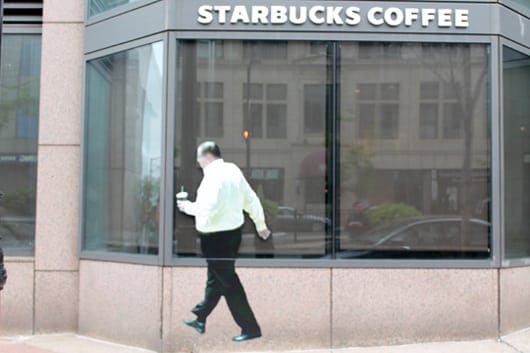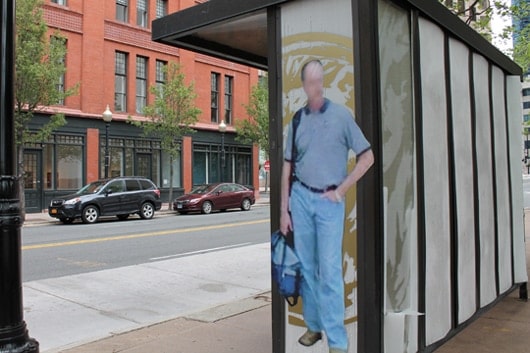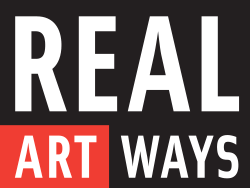Event
Paolo Cirio: Street Ghosts






 The locations are, top to bottom: 1. Starbucks at City Place, Trumbull Street 2. Society Room, Pratt Street 3. Hartford Prints!, Pratt Street (now missing) 4. 81 Asylum Street (now missing) 5, 777 Main Street (now missing) 6. EBK Gallery, Haynes Street 7. Bus Shelter near TheaterWorks, Pearl Street Cirio has produced versions of this project in more than two dozen cities around the world, including London (see the photo below), Paris, New York City, Berlin, Montreal (see the video above), Sydney and Hong Kong. Cirio says, “It’s a temporary thing. That’s why they are ghosts. They appear and disappear and may come back any time.”
The locations are, top to bottom: 1. Starbucks at City Place, Trumbull Street 2. Society Room, Pratt Street 3. Hartford Prints!, Pratt Street (now missing) 4. 81 Asylum Street (now missing) 5, 777 Main Street (now missing) 6. EBK Gallery, Haynes Street 7. Bus Shelter near TheaterWorks, Pearl Street Cirio has produced versions of this project in more than two dozen cities around the world, including London (see the photo below), Paris, New York City, Berlin, Montreal (see the video above), Sydney and Hong Kong. Cirio says, “It’s a temporary thing. That’s why they are ghosts. They appear and disappear and may come back any time.” About the artist
Paolo Cirio works with legal, economic and semiotic systems of the information society. He investigates social fields impacted by the Internet, such as privacy, copyright, democracy and economics. He shows his research and intervention-based works through artifacts, photos, installations, videos, and public art. Paolo Cirio's art practice considers how society is impacted by the distribution, organization, and control of information. It embodies the conflicts, contradictions and potentials inherent to the social complexity of information society through a critical, provocative and proactive approach. His techniques of exposure, appropriation, and recontextualization of sensitive information and social processes provoke a new way of seeing and understanding modern complex social systems and dynamics. Cirio uses popular language, irony, interventions and seductive visuals to engage a wide public in critical issues and sophisticated works of art. His works often make contradictions apparent, expose mechanisms, and dispute their processes in order to debunk functions and perceptions of normative systems. Cirio's works of art ultimately propose creative alternatives beyond the socioeconomic critiques they offer. Cirio is particularly interested in how media and specific arrangements of information influence the creation and perception of cultural, political, and economic realities, as well as personal emotional states, interpersonal relationships, and instinctive behaviors.
